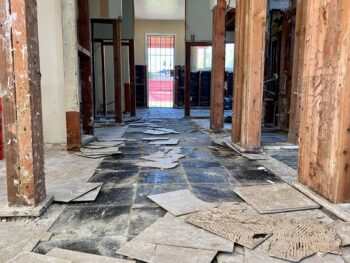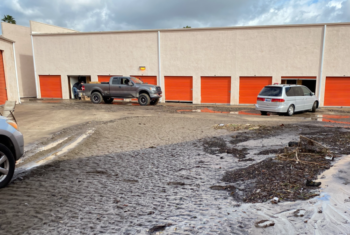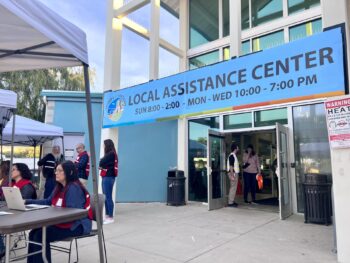The next time San Diego is threatened by a wildfire or a health emergency like the H1N1 pandemic, how will you get information? Flip on the TV? Pull out your smartphone and Google the latest?
Now imagine you don’t speak English and you’ve lived in this country only a few years or months. How do you find out what you need to know?
On Tuesday, about 100 San Diegans representing eight languages gathered at SDSU to answer that question. The forum, sponsored by the County Health and Human Services Agency (HHSA), the County Office of Emergency Services, and SDSU, will help the County develop an emergency communications plan for reaching non-English speakers in a disaster or health emergency.
“The community’s input is essential to ensure the plan is effective, said Justine Kozo, the chief of the County’s Office of Border Health. “Our goal today was to bring people together from immigrant and refugee communities and ask them to tell us the best way to reach them in an emergency,”
Representatives from Spanish, Vietnamese, Filipino, Chinese, Arabic, Korean, Karen (one of the languages spoken in Burma) and Somali-speaking communities sat by language groups. A professional facilitator guided each table’s discussion.
The frank and lively sessions provided a glimpse of some of the challenges the County faces in improving emergency communications to non-English speaking populations.
At a table of about 12 Filipino community members, one man explained that many people he knows from the Philippines watch news from their home country in favor of local English-language broadcasts. But such programs are no good for local emergency news.
“These people have to wait until a young family member is home from work to tell them to turn off the TV, there’s a fire in their neighborhood,” the participant explained.
When the facilitator asked about other ways people in the community get information, several participants said people rely on family members and church leaders.
But one woman told the facilitator to bear in mind the Filipino community’s diversity.
“I’m Catholic, but I have some friends who are Buddhist. Some people from the Philippines are Muslims, so you can’t just communicate through one church,” she said.
Holly Crawford, director of the County Office of Emergency Services, said Tuesday’s meeting was a first step in developing an emergency communications plan that will probably turn out to be complex. The facilitators in Tuesday’s event will use the community input to provide a report that will guide the County’s next steps.
“The answers and solutions for these very different community groups are not going to be the same for each of them,” Crawford said.
Kozo said her office, SDSU, the County’s HHSA staff that works with the refugee communities, and additional County staff had been promoting Tuesday’s forum for months through networking and neighborhood events in order to attract strong participation.
The meeting will be followed by more work with the participants and their communities. Ultimately, the County may designate particular community leaders, volunteers or agencies to be a part of a network that helps disseminate emergency information.
“This effort today helps us to forge relationships and partnerships with these communities,” Crawford said.
Nick Macchione, HHSA’s director, welcomed the participants Tuesday with reflections on his own childhood, growing up as an Italian immigrant in New Jersey. He said when extreme weather and other emergencies threatened his neighborhood, he and his family turned to those they knew and trusted
“It was people like you, people who translated what the government was telling us but who understood our culture, our language, our beliefs,” Macchione said. “I believe many people survived because of people like you.”





